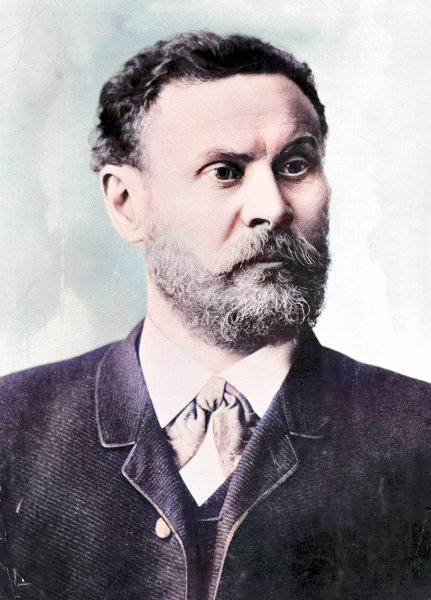
Otto Lilienthal (23 May 1848 – 10 August 1896)
On May 23, 1848, German aviation pioneer Otto Lilienthal was born, who was the first person to make well-documented, repeated, successful gliding flights. For his contributions to aviation he is often referred to as “The Father of Flight.”
Otto Lilienthal – Early Years
Otto Lilienthal received a good education at a grammar school in Anklam despite the sudden death of his father and the financial struggles of his family. Flight tests and experiments as well as the study of bird flight already fall into this time. From 1864 Otto Lilienthal attended the Potsdam Provincial Trade School. After two years he started an internship at Berliner Maschinenfabrik Schwartzkopff, a local engineering workshop.
Flapping Wings and Hot Air Balloons
In 1867 and 1868 the Lilienthal brothers built experimental devices in Anklam to generate lift by wing beat, which they created with flapping of wings. As a result, a maximum of 40kg was lifted. In contemporary physical studies, the exact features of buoyancy were not clear yet, and the opinions on Lilienthal’s flying attempts polarized. The following investigations of the vaulted wing in the air flow without flapping became the decisive experiments. By the end of the 1860’s, he received a scholarship to study at Berlin’s Technical University. Through inventions and risky experiments, Lilienthal earned himself a good reputation in early years. After graduating in 1870, Lilienthal participated in the Prussian-Franco war. While stationed in Paris, the curious inventor noticed the frequently flying hot air balloons and he admired their success.
A Curved Wing Shape
Otto Lilienthal, supported by his brother Gustav, had already been carrying out systematic measurements for buoyancy on flat and curved surfaces since 1874 with a rotation apparatus he had developed himself, which provided clear results. On the one hand, curved wings provided a multiple of vertical lift compared to flat surfaces with a relatively small increase in air resistance in the horizontal direction, and on the other hand the slightly curved bird wing shape had the best resistance values. Above all financial restrictions, but also the zeitgeist prevented a prompt publication of his findings.
The Normal Soaring Apparatus
Motivated to start his own business as well, Lilienthal and his brother intended to patent some of their inventions, like the Stirling engine (as it was known later on),[5] but stayed unsuccessful. In the 1880’s, the brother’s financial outcome finally improved. They constructed a kind of boiler that sold well and let the company grow up to 60 employees. Also they began distributing the ‘Normalsegelapparat’ (“Normal soaring apparatus”), a glider that became known as the very first widely sold airplane in history. The brothers then also led the first aircraft factory in the world.
Der Vogelflug als Basis der Fliegekunst
The fundamentals to the success of his flying apparatus depicted a long term theoretical understanding of flight and physics. It was not until 1889 that Lilienthal was able to publish his book Der Vogelflug als Basis der Fliegekunst (The flight of birds as the basis of the art of flying), which today is considered the most important aeronautical publication of the 19th century. Contemporary attention for the book was low, as the general public favoured aviation according to the principle of lighter-than-air, the further development of the balloon into an airship.. The Brothers Wright later noted that Lilienthal’s theoretical foundations influenced their plans for the later constructed airplane.[6]
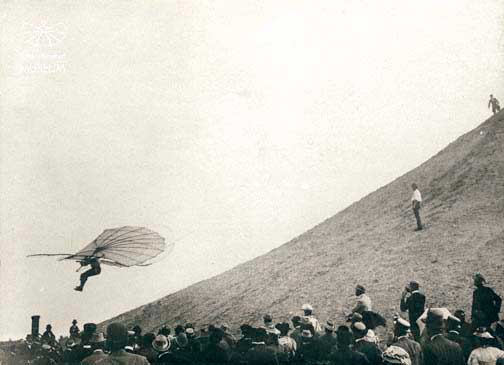
Flight of Lilienthal from the Fliegeberg in Lichterfelde on 29 June 1895
First Practical Flight Attempts
When it came to taking the theoretical foundations to actual experiments, Otto Lilienthal’s brother Gustav quit, wherefore Otto is now the one credited for the most achievements. The tests were carried out on frames made of willow wood covered with waxed cotton fabric (Schirting) with a span of 6 to 10 m, a wing span of approx. 14 m² and a maximum wing depth of 2.5 m. Lilienthal began with standing exercises against the wind, followed by jumps from the springboard in the garden of his house. With the beginning of the 1890’s, he began looking for places near Berlin to jump off small hills. From 1893, several hills in the Rhinow mountains near Stölln, between Rathenow and Neustadt (Dosse), became practice areas. Flight distances of up to 250 m can be achieved there. In 1894 Lilienthal had a 15 m high hill built up in Lichterfelde, then near Berlin, the still existing” Fliegeberg” on which thousands of flights up to approx. 80 m width reach him.
Engine Powered Wings
Lilienthal even began constructing engine powered wings for his glider, but could never use them due to his tragic accident in 1896. Otto Lilienthal’s achievements wrote history, he became known and admired world wide, and was awarded numerous times posthumously for his courage and his inventive genius.
Legacy and Inspiration
Lilienthal is widely regarded as “the first aviator of mankind”. This classification is problematic, however, since the first manned aircraft had already flown heavier than air in the form of fixed kites 2,500 years ago. However, nothing is known about free or controlled flights from that time. The father of aerodynamics, the Englishman George Cayley,[7] is reported to have put an aircraft designed by him into a gliding flight in 1852 with a domestic worker as pilot. A similar story is reported about the Frenchman Jean Marie Le Bris for 1856, and the American John Joseph Montgomery is said to have made his first controlled flights in 1884. Other credible but also fantastic traditions of flight tests are widespread. A very well-known, long probably undervalued experiment is that of Albrecht Ludwig Berblinger, the “tailor of Ulm”, in 1811.
Otto Lilienthal: “FIRST IN FLIGHT” – 7 Sekunden für die Ewigkeit, [9]
References and Further Reading:
- [1] Otto Lilienthal Short Bio
- [2] Otto Lilienthal Biography
- [3] The man who jumped off hills: Otto Lilienthal’s Fliegerberg
- [4] Birdflight as the Basis of Aviation. Lilienthal, Otto. First edition, 1911 reprinted 2001
- [5] Robert Stirling and the Stirling Engine, SciHi Blog
- [6] The Wright Brothers Invented the Aviation Age, SciHi Blog
- [7] George Cayley and the Science of Aeronautics, SciHi Blog
- [8] Otto Lilienthal at Wikidata
- [9] Otto Lilienthal: “FIRST IN FLIGHT” – 7 Sekunden für die Ewigkeit, Filmhaus Berlin @ youtube
- [10] “Killed In Trying To Fly”, New York Herald, August 12, 1896
- [11] “Remembering Germany’s first “flying man”“. The Economist. 20 September 2011.
- [12] Newspaper clippings about Otto Lilienthal in the 20th Century Press Archives of the ZBW
- [13] Timeline of aviation pioneers born before 1860, via Wikidata

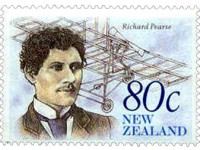
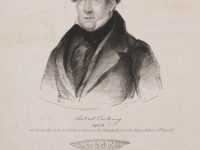
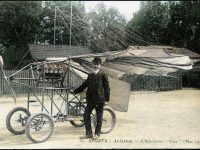
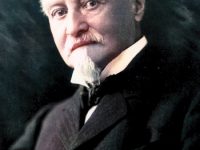

Pingback: Whewell’s Gazette: Year 03, Vol. #41 | Whewell's Ghost